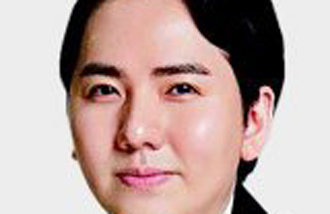Fruitless Economic Policies
It was several times more demanding than when I worked for Cheong Wa Dae. I had to work until I became completely exhausted, a director of the Ministry of Finance and Economy, who recently returned to the ministry after having been dispatched to Cheong Wa Dae, said on Wednesday.
I cannot explain everything that the participatory government has done so far because there has been so much, President Roh Moo-hyun said Tuesday evening in his special speech for the new year.
Actually, the incumbent government has done a lot of work over the past four years. It has even drawn up several dozens of road maps for policies with the help of numerous presidential advisory commissions.
The government has studied hard, but it has received a failing grade, figuratively speaking.
The annual average growth rate over the past four years is 4.2 percent, even lower than the governments potential growth estimate of five percent. Less than 300,000 new jobs have been created over the past two consecutive years. Overall, Koreas economic performance has been also quite disappointing this year. Experts believe that Korea is unlikely to generate over 300,000 jobs once again this year.
Experts point out that the principle cause of the discrepancy between President Rohs self-evaluation and the economic outcomes is introducing an excessive number of conflicting policies at once. In other words, the government efforts did not pay off because they were an ill fitted combination.
A good example of the governments failure in harmonizing its policies is its real estate policies which were drawn up to stabilize housing prices and balance national development. Expert agree that the compensation the government lavishly gave under the excuse of balanced national development flowed into the real estate market in the Gangnam area of southern Seoul, causing housing and land prices shoot up.
In addition, the following policies were picked as the most incompatible policies; policies to stabilize housing prices versus those to keep interest rate low to stimulate corporate investment; policies to expand welfare spending versus fiscal balancing ones; and policies to produce more jobs versus those to protect irregular workers.
The current government made a mistake. Each of its policies sounds good if you look at them separately. But the problem is that they can cause adverse effects if implemented simultaneously, Bae Sang-geun, a senior researcher at the Korea Economic Research Institute, said.
Meanwhile, some experts blame various presidential commissions established at the early days of the Roh administration, saying they pursued policies pertinent only to their job, worsening the conflict of interests.
The government used all those policies that look good to the eyes of amateurs who have no experience, including professors and some of the 386 generation. The problem snowballed because the chief decision maker was not capable of differentiating what to take or not to throw away among those conflicting policies, a research at a civil economic research center said on the condition of anonymity.
Headline News
- Gov’t faces criticism over policy reversals and decision-making processes
- Controversy erupts over ‘single life’ welfare packages
- Gov’t announces worker protection measures for heat waves
- Madonna wearing Kahlo’s items faces controversy over special treatment
- Pirates' Bae Ji-hwan pulls off a stunning come-from-behind victory







